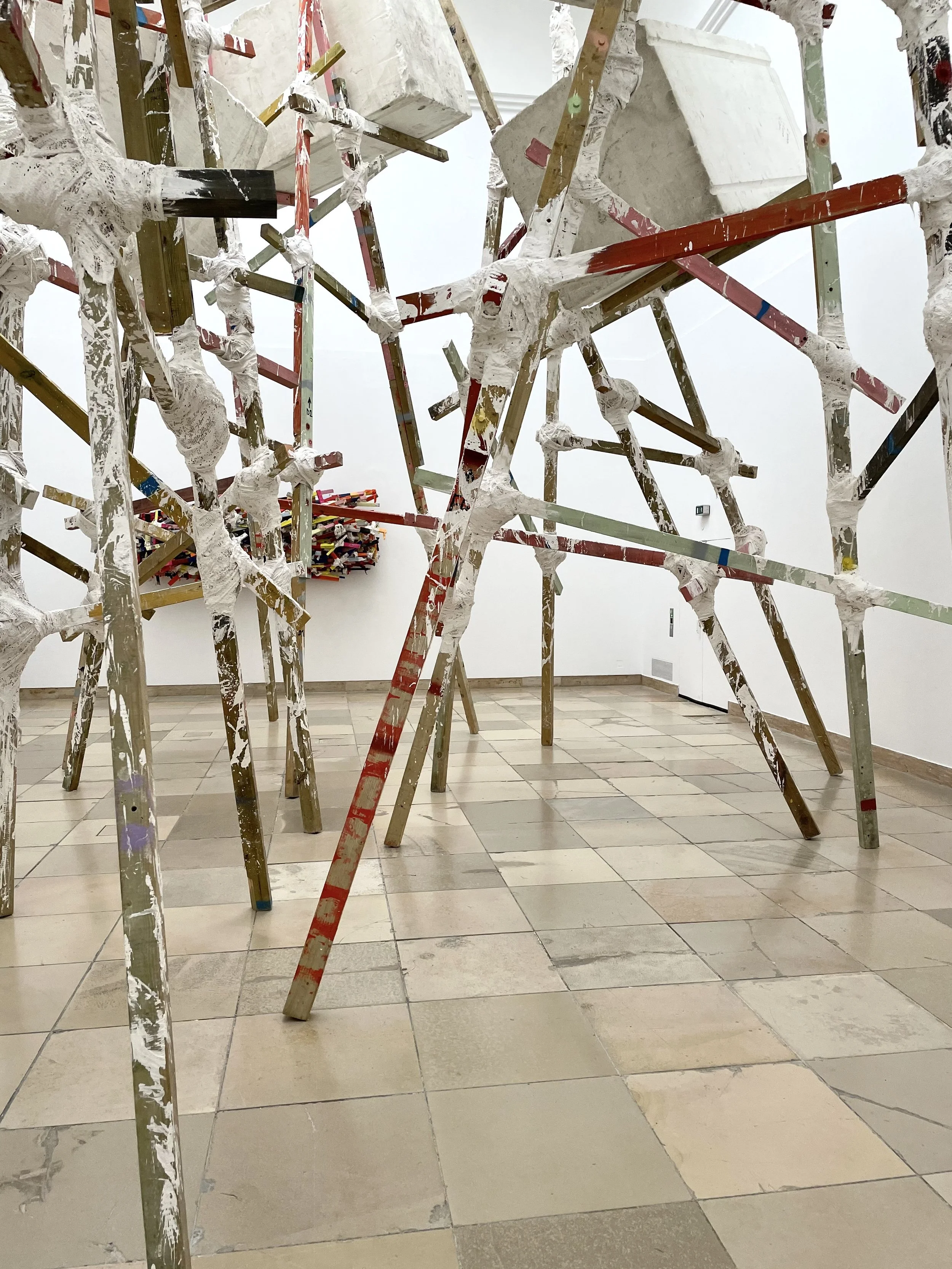Arte Povera in Paris: Legacies and Lessons
Arte Povera, an Italian avant-garde art movement from the late 1960s, notable for its radical use of humble, everyday materials—earth, metal, rags, and even fire - challenged traditional ideas about value, permanence and form in art and rebelled against the materialism that was reshaping postwar Europe. In its new exhibition at the Bourse de Commerce the Pinault Collection showcases a range of art works by those most closely associated with the movement – such as Michelangelo Pistoletto, Jannis Kounellis or Giavanni Anselmo - alongside works from artists practicing throughout the ensuing decades – including those of William Kentridge, Pierre Huyghe and Agnieszka Kurant - confronting this heritage. Within this dialogue Arte Povera’s profound visual influence can not only still be seen in later iterations but also the ways in which its key tenets continue to resonate, offering insights into contemporary society and its struggles with overconsumption, environmental degradation, and social inequality.
The irony of an Arte Povera exhibition being staged in one of the most imposing manifestations of “the market” and more of a temple than merely a museum is presumably not lost on many spectators. And still, through its non-dogmatic approach to artistic creation, the exhibition and movement itself present a bizarre but no less relevant meditation on many issues surrounding inherent vs. artistic value, hierarchy, meaning, rampant consumerism and the absurdity of the art market.
Rejecting Commodification
Arte Povera emerged as a reaction against the commercialisation of art and the rapid industrialisation transforming Italy and postwar Europe. Artists in the movement sought to strip art of its market-driven associations by embracing ephemeral materials. Jannis Kounellis’s works, for example, used coal, wool, and fire—materials that conveyed a raw, almost primal connection to nature and manual labor. Alberto Burri, with his use of burned plastic and burlap sacks, challenged viewers to see beauty in what was often considered waste.
In our contemporary context, Arte Povera’s rejection of the market feels strangely poignant. In a time marked by planned obsolescence, disposable goods, and digital excess, the movement’s emphasis on simplicity and raw materials serves as a reminder to value durability and sustainability over convenience. It can be seen as advocating for a shift away from mindless consumption towards thoughtful creation, encouraging us to find value in the overlooked and discarded and urging us to reconsider and redefine the concept of “enough.”
Radical Reimagination
One of Arte Povera’s core ideas was the integration of nature within art. Jannis Kounellis, for instance, famously incorporated live plants, animals, and natural elements into his installations, blurring the lines between the organic world and human creations. Treating nature as a collaborator rather than a resource, was revolutionary at the time and with escalating concerns over climate change and environmental collapse, the movement’s respect for natural elements underscores the interconnectedness of human and natural systems and challenges us to engage with materials in ways that honour, rather than deplete, the environment. Arte Povera’s aesthetic of embracing nature’s imperfection and changeability speaks directly to today’s calls for more sustainable practices, pushing us to acknowledge the limitations of earth’s resources.
The movement’s use of unremarkable materials also signalled a rebellion against established cultural and social hierarchies. By using burlap, dirt, and other “poor” materials, artists were rejecting the elitism of the art world and questioning the notion of “high” versus “low” culture. In this way, Arte Povera aligned itself with broader movements of the 1960s that challenged societal norms, advocated for workers’ rights, and questioned power structures.
In today’s world, where conversations about systemic inequality and inclusivity are at the forefront of public interest, Arte Povera’s ethos continues to resonate. Its disregard for traditional hierarchies encourages a democratisation of creativity, suggesting that art can emerge from any material, person, or place. Contemporary artists and activists alike are influenced by this idea, working to dismantle oppressive structures as we are reminded that meaningful expression doesn’t have to come from wealth or status—it can come from anyone who questions the world around them.
Embracing Impermanence
Another distinctive aspect of the movement is its embrace of impermanence and chance. Piero Manzoni, one of the Arte Povera’s most provocative figures, famously canned his own excrement as a critique of art’s commodification, underscoring the absurdity of value in art. This embrace - albeit a passive aggressive one - of impermanence, even to the point of decay, was a radical challenge to the art world’s obsession with preservation and longevity. In an era where digital media often creates a false sense of control, some of the key tenets the movement engages with suggest to us to let go of the idea that everything must last forever, whether in art or in life. As we grapple with the insanity of TikTok restocking videos, a willingness to embrace impermanence challenges us to rethink our relationship to objects, time, and legacy and to find value in transient experiences rather than fixate on accumulation. And we are reminded that art, like life, need not be conventional to be meaningful.

